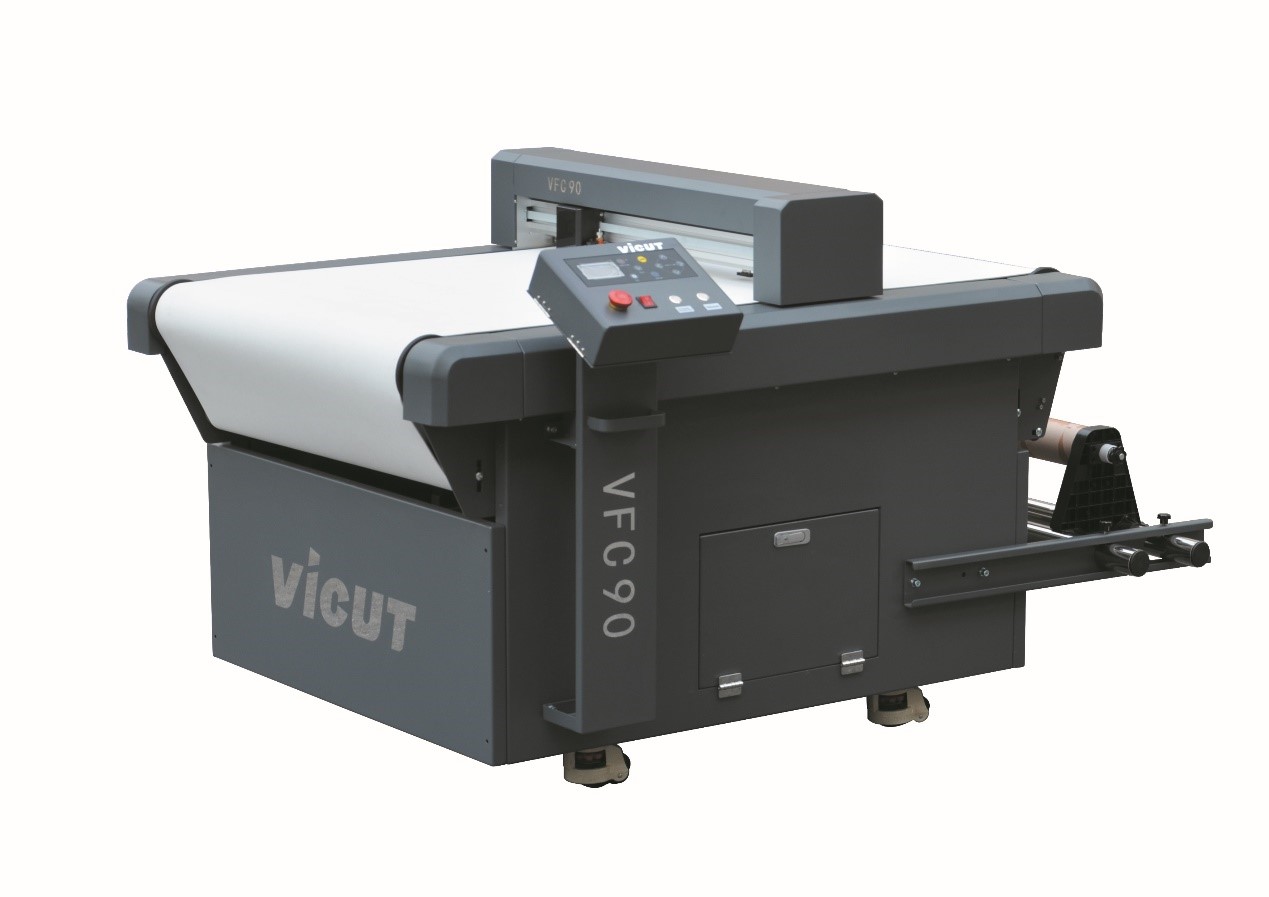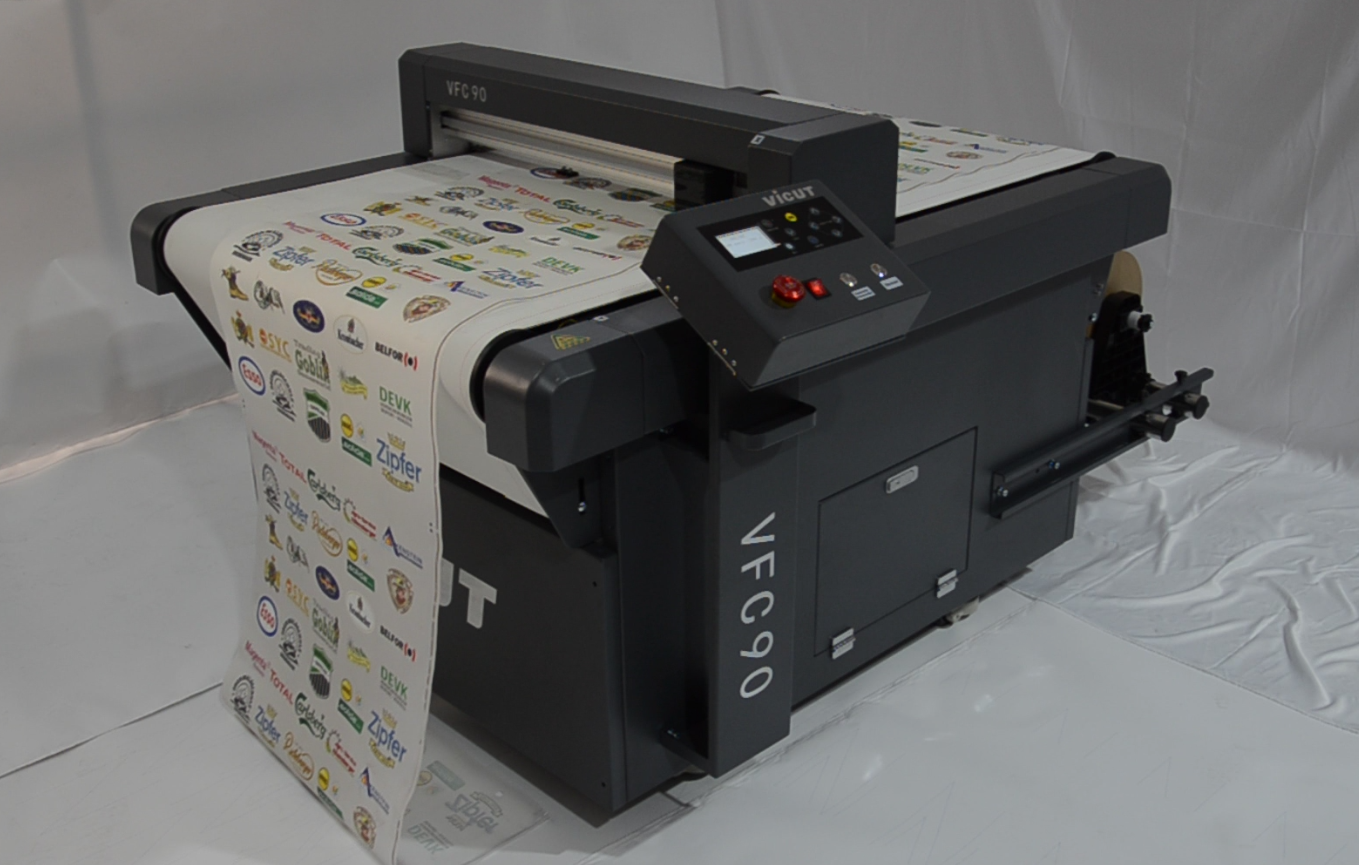 vicutcnc@cncvicut.com
vicutcnc@cncvicut.com

+86 551 6577 4134



+86 551 6577 4134
 Get A Quote
Get A Quote
 vicutcnc@cncvicut.com
vicutcnc@cncvicut.com

+86 551 6577 4134



+86 551 6577 4134
 Get A Quote
Get A Quote


l What are DTG and DTF printing
l Comparing DTG and DTF
1. Startup Costs
2. Consumables
3. Production time
4. Order quantity
5. Print quality
6. Versatility
7. Color vibrancy
8. Durability
9. Eco-friendliness
10. Maintenance
l Summary
l Which Solution Should You Choose?
Direct-to-garment (DTG) printing is digital printing onto a garment, the same way you’d normally print a document on your desktop printer. You’ll first need to digitize a design into the system, then a raster image processor (RIP) software translates it into a set of instructions the printer can use to print it out.
The main selling point of DTG printing is its ability to print out complex designs with multiple colors at relatively fast printing speeds. It’s best suited to reach small-time customers looking for unique custom prints with less than 30 shirts per order, which is something screen printing cannot do effectively.
On the other hand, DTF printing prints designs on a special transfer film. The artwork will be printed on the reverse side of the film, after which a hot melt powder is applied to it. The powder is an adhesive, helping the inks bond to the garment by using a heat press to apply the design to the chosen garment.
DTF printing’s main advantage comes from its cost-effectiveness. Consumables such as printer inks, transfer films, and hot melt powder are relatively inexpensive, allowing you to keep costs low while maximizing the gains from your prints. Since you’re printing on sheets or rolls of film, you can easily print multiple designs on a single sheet or length of the roll.
l Comparing DTG and DTF
1. Startup Costs
DTG is by far the MOST expensive one. A standard DTG printer can easily cost between $13,000 to $25,000 – if not more – and that’s only the printer you’re purchasing!
In the case of DTF equipment, you’ll only need a DTF printer, inks, transfer films, and a heat press. Most importantly, you won’t need a pre-treatment machine or solution, further driving down your expenses.
2. Consumables
DTG ink is astonishingly expensive, especially white ink.
In contrast, DTF inks are more affordable, and prices for your transfer films and hot melt powder are relatively low.
3. Production time
DTG printing is the slowest of the two printing solutions since it prints designs line by line.
However, in the case of DTF, printing multiple designs on a single transfer film helps cut down production times significantly.
4. Order quantity
DTG printing is suitable for small-scale, highly customized orders with complex designs and multiple colors.
DTF printing can take on larger orders, much like screen printing, as the designs are printed onto the relatively wide transfer films. It’s more cost-effective to perform bulk printing than small-scale orders, especially since you can print multiple designs on a single sheet of transfer film. Transfer films come in various sizes, allowing you to find the correct measurements to maximize your prints.
5. Print quality
DTG printing is well-regarded as being able to create prints with a very soft hand, considered by many to be the softest compared to the other popular printing methods.
With DTF, the design transfers tend to have a plastic feel since it’s printed on film before being heat pressed onto the garment. When printed on cotton garments, you’ll have that firm, plastic-like finish when you feel the print. On substrates like polyester, however, the print is indistinguishable from the substrate. You’ll eliminate the plastic feeling since it feels like a part of the substrate itself.
6. Versatility
DTG printing brings a lot to the table but is unfortunately incompatible with non-cotton-based substrates like nylon or polyester. DTG printing works better on cotton and specific cotton blends, such as canvas or hemp, as the water-based inks are easily and permanently absorbed into the fabric. Substrates like polyester have waterproof properties, making it difficult for the inks to stay onto the substrate surface.
DTF printing shines in this regard, owing to the use of transfer films. You can quickly transfer the designs onto substrates like polyesters, silk, nylon, and more.
7. Color vibrancy
DTG and DTF prints use CMYK (Cyan, Magenta, Yellow, Black), which accurately conveys colors once printed onto a physical medium.
Luckily, you’ll get excellent color blending properties from your DTG and DTF prints. It’s pretty easy to capture or replicate gradient changes and subtle elements in the design, thanks to the inks’ water-based nature and transparency properties. Inks can easily be combined to make beautiful blends.
8. Durability
For DTG printing, printed garments that are properly pretreated and cured are quite durable. DTG prints usually last for up to 50 washes – more if you take extra care of them.
Take a DTF printed shirt and stretch the design as much as possible. You might notice that the design returns to its original shape once you stop – no stretch marks, tearing, or damage! Their durability in the wash is also better than DTG’s, especially if you take good care of your garments.
9. Eco-friendliness
If you’re looking for a sustainable fulfillment method, DTF printing is an ok choice. This technique allows printing one-offs, so you won’t have to worry about unsold stock. Being able to make products on demand also eliminates overproduction. The inks used in direct-to-film printing are water-based and non-toxic, so they’re environmentally friendly.
The transfer film used for the design is usually recyclable, so the printing process mostly creates no waste.
DTG is also a good option if you’re looking for an eco-friendly fulfillment method. Like with DTF printing, you can print one-offs with the DTG technique. Making products on demand eliminates overproduction, as you can order the exact amount of products that get ordered.
10. Maintenance
Maintenance is one of the most important considerations when you’re thinking about a printer to buy. Both DTG and DTF printers have relatively similar maintenance cycles. However, DTF printers benefit from using much less white ink than DTG printing.
l Summary
Startup Costs | DTF is more affordable than DTG |
Consumables | DTF is more affordable than DTG |
Production time | DTF is more time saving than DTG |
Order quantity | DTF is better for medium to large quantity than DTG |
Print quality | DTG has softer feeling on cotton fabric, while DTF on substrates like polyester, is indistinguishable from the substrate. You’ll eliminate the plastic feeling since it feels like a part of the substrate itself. |
Versatility | DTF is better than DTG |
Color vibrancy | DTF is similar with DTG |
Durability | DTF is better than DTG |
Eco-friendliness | DTF is similar with DTG |
Maintenance | DTF is more affordable than DTG |
l Which Solution Should You Choose?
If you’d like to be able to meet medium-to-large orders for various materials, then DTF is a good pick. DTF printing is a straightforward way to expand your market share since you can easily print designs for a wide variety of material types that cater to a broad audience. Moreover, DTF printing is economical and environmentally friendly since it requires less ink than DTG


